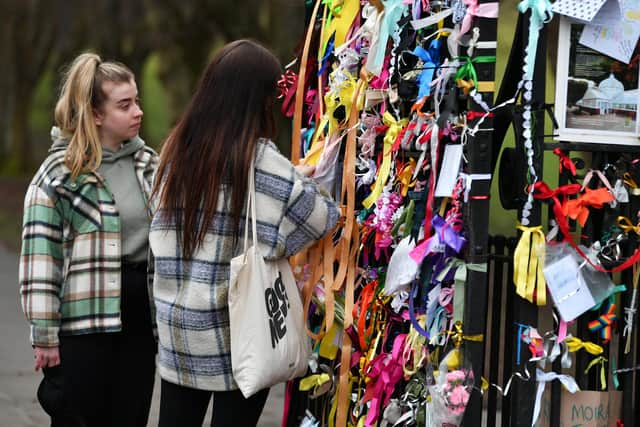Sarah Everard’s death: Fear of attack while travelling unacceptably high for half the population – Alastair Dalton
and live on Freeview channel 276
I was shocked to read a colleague writing about her experience in Edinburgh, such as being followed home by a sinister man.
While the risk of attack might cross the mind of some men while walking the streets and travelling on buses and trains, especially in the dark, it will be never far from being foremost in many women’s thoughts throughout their journeys.
Advertisement
Hide AdAdvertisement
Hide AdThe key point is that although the chance of being assaulted while travelling is low, the fear that it might happen is unacceptably high for half the population.


That fear only intensifies if men do things like choosing to sit beside lone women when plenty of other seats are available, the women trapped by worrying about the reaction they may provoke by moving to another seat.
I’ve also been told of the lengths some women go for safety, some sending friends a photo of the number plate of their taxi, others even leaving strands of their hair on the seat to identify the vehicle they were in, should the worst happen.
Even some senior female transport executives told me they were scared of travelling at night, feeling vulnerable waiting at bus stops and leaving unstaffed stations.
Advertisement
Hide AdAdvertisement
Hide AdSarah Everard’s death comes at a vital stage when we need to tackle this huge issue, which for far too long appears to have been accepted as a fact of life, something that women just have to “deal with”.
As we emerge from lockdown over the next few months, it’s crucial we take the opportunity to make public transport feel safer for women.
On trains, staff should be walking through carriages much more frequently than I recall they used to, pre-pandemic, especially on late-night services, to provide reassurance.
British Transport Police officers are a familiar sight at major stations but a higher presence on trains is needed too.
Advertisement
Hide AdAdvertisement
Hide AdOn both buses and trains, regular announcements could remind passengers of the near-ubiquitous CCTV coverage within vehicles and carriages, which, when highlighted to certain men, might just make them think twice.
ScotRail has the biggest station CCTV network of any British train operator, with virtually every station also having a “help point” where you can press a button to get instant assistance.
The Rail Delivery Group, the industry umbrella body, is also about to launch a new strategy “to make people safer from all forms of unwanted sexual behaviour”.
I’m told women-only carriages or seats are not seen as the right option, being regarded as a backwards step which would send a message that women were weak, rather than challenging men’s behaviour.
Advertisement
Hide AdAdvertisement
Hide AdHowever, a long-term approach to get to the heart of the problem – which is already underway in places – must be stepped up and prioritised.
This is the educating of boys from an early age to respect for girls and women, and its regular reinforcement in every school, college and workplace.
Some men will continue to harass and attack women regardless of additional safety measures or increased prison sentences.
So while we can continue trying to eradicate the menace from transport with changes now, a fundamental shift in male attitudes from birth is also needed.